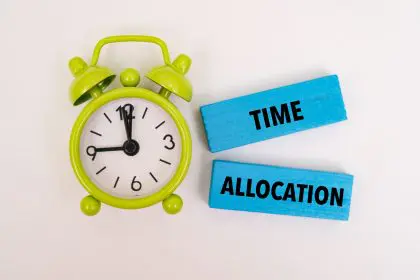You know that feeling when your brain feels like a browser with 47 tabs open, and half of them are playing different videos at the same time? You sit down to work or study, and within five minutes your mind is wandering to what you’re having for lunch, that weird text from your ex, and whether you remembered to pay your electric bill. Meanwhile, your actual task sits there mocking you while you accomplish absolutely nothing.
Here’s something that might surprise you though. The right kind of music could be the key to finally getting your scattered brain to cooperate. Not just any music, mind you, but specific types of sounds and rhythms that can actually help your brain lock into focus mode instead of bouncing around like a ping pong ball in a hurricane.
The science behind this is pretty fascinating, but more importantly, the practical applications can completely change how productive you feel during your work sessions. Let’s explore how to turn your playlist into a productivity superpower.
Instrumental music works better than songs with lyrics
When you’re trying to focus on reading, writing, or problem solving, your brain is already working hard to process language and complex information. Adding lyrics to the mix is like trying to have two conversations at once. Your brain keeps getting pulled between the words you’re trying to focus on and the words in the song.
Instrumental music doesn’t compete for the same mental resources that you need for language based tasks. Classical music, ambient electronic tracks, movie soundtracks, and jazz without vocals can all provide background stimulation without hijacking your attention. Your brain can process the musical patterns without getting distracted by trying to understand or sing along with lyrics.
This doesn’t mean lyrical music is always bad for focus. Some people find that familiar songs with lyrics can actually help with repetitive or physical tasks because the predictable patterns don’t require active attention. But for mentally demanding work, instrumental tracks are usually your best bet.
The tempo matters more than you think
Different speeds of music can put your brain into different states of alertness and focus. Slower music around 60 to 70 beats per minute can help calm an anxious or overstimulated mind, making it easier to settle into deep concentration. This tempo range is similar to a relaxed heart rate, which can help your whole nervous system chill out.
Moderate tempo music between 70 to 100 beats per minute tends to be ideal for most focus tasks. It provides enough energy to keep you alert without being distracting or overwhelming. This is the sweet spot where your brain feels engaged but not agitated.
Faster music above 120 beats per minute can be great for tasks that require energy and movement, but it can be too stimulating for activities that need calm, sustained attention. Save the high energy tracks for cleaning your house or working out, not for writing reports or studying for exams.
Consistency creates the perfect background buzz
One of the biggest mistakes people make with focus music is constantly switching between different styles, volumes, and energy levels. Every time the music changes dramatically, your brain has to readjust, which breaks your concentration even if you don’t consciously notice it happening.
The best focus music maintains a consistent mood and energy level throughout your work session. Think of it like creating an audio environment rather than listening to individual songs. You want the music to fade into the background and become part of your mental workspace, not something that keeps grabbing your attention.
This is why many people find success with specially designed focus playlists, ambient music albums, or even sounds like rain, ocean waves, or white noise. These provide consistent audio stimulation without the jarring transitions that can pull you out of your flow state.
Volume control is absolutely crucial
The volume of your focus music is just as important as what you’re listening to. Too loud, and it becomes a distraction instead of a helpful tool. Too soft, and it won’t provide enough masking to block out other environmental distractions.
Generally, focus music should be just loud enough that you can hear it clearly but quiet enough that you could easily have a conversation over it. You want it to create a gentle audio bubble around your workspace without overwhelming your ability to hear your own thoughts.
Many people find that they need to adjust the volume based on their environment and the type of task they’re doing. Detailed work that requires intense concentration might need quieter background music, while routine tasks can handle slightly higher volumes.
Nature sounds and white noise deserve special mention
Sometimes the most effective focus music isn’t music at all. Consistent background sounds like rainfall, ocean waves, forest ambience, or various types of white noise can be incredibly effective for concentration. These sounds mask distracting environmental noise without adding complex musical elements that might compete for your attention.
White noise, brown noise, and pink noise each have slightly different frequency profiles, and different people respond better to different types. Some find the higher frequencies of white noise too harsh, while others find brown noise too heavy. It’s worth experimenting to see which type of consistent background sound works best for your brain.
Nature sounds can be particularly effective because they tend to be both masking and calming. The sound of rain or ocean waves provides consistent background noise while also triggering relaxation responses that can help reduce stress and anxiety that interfere with focus.
Timing your music strategically
The most effective approach to using music for focus often involves strategic timing rather than just playing music constantly. Many people find success with techniques like playing focus music only during their most challenging tasks, or using specific playlists to signal to their brain that it’s time to concentrate.
Some people use music as a timer, creating playlists that last exactly as long as they want to work on a particular task. When the music stops, they know it’s time for a break. This can help with both focus and time management.
Others find that starting their work session with a few minutes of slightly more energizing music helps them get into the right mindset, then switching to more ambient background sounds once they’re fully engaged with their task.
Personal preferences still matter
While there are general principles that work for most people, the most important factor is what actually works for your specific brain and preferences. Some people focus best in complete silence, others need heavy metal, and still others prefer the sound of coffee shop chatter.
Pay attention to your own patterns and responses. Notice which types of music help you feel more focused and which ones seem to make your mind wander more. Keep track of what works for different types of tasks, because you might find that reading requires different audio conditions than creative work or problem solving.
The key is to experiment systematically and pay attention to your actual productivity and focus levels, not just what you think should work or what works for other people.
Creating your perfect focus environment
The goal isn’t to find one perfect playlist and use it forever. Instead, think about building a toolkit of different audio options for different situations, moods, and types of work. Having variety prevents your brain from getting too accustomed to any one sound, which can reduce its effectiveness over time.
Start with the basic principles of instrumental music at moderate tempos and consistent volumes, then adjust based on your personal response and the specific demands of your work. Remember that the best focus music is the kind that helps you forget it’s even playing while you dive deep into whatever you’re trying to accomplish.















